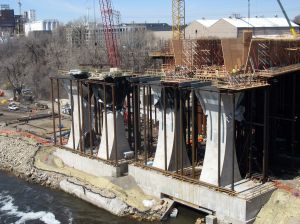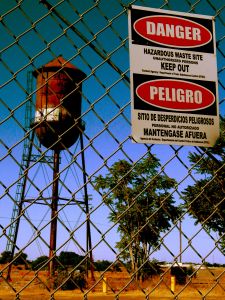Humans have used asbestos for thousands of years, but it was not until the industrial revolution when it was heavily mined and used in virtually every aspect of manufacturing, construction, and transportation sectors. Asbestos is a naturally occurring silica material generally harvested through mining operations.
 In the late 1970s and 1980s, as the general public became aware of the dangers associated with asbestos, state and federal government agencies banned a majority of asbestos use in the United States. The danger of asbestos is that fibers can be inhaled and become lodged in the protective layer of tissue, known as the mesothelium, which lines the chest, lungs, chest, and abdomen. Once the fibers become trapped in the mesothelium, it can metastasize into a deadly form of cancer known as mesothelioma. It can also cause devastating scarring of the lung tissue, known as asbestosis, and other serious respiratory illnesses.
In the late 1970s and 1980s, as the general public became aware of the dangers associated with asbestos, state and federal government agencies banned a majority of asbestos use in the United States. The danger of asbestos is that fibers can be inhaled and become lodged in the protective layer of tissue, known as the mesothelium, which lines the chest, lungs, chest, and abdomen. Once the fibers become trapped in the mesothelium, it can metastasize into a deadly form of cancer known as mesothelioma. It can also cause devastating scarring of the lung tissue, known as asbestosis, and other serious respiratory illnesses.
While asbestos is no longer commonly used, we are far from being rid of it, as it is found in many buildings throughout the Commonwealth of Massachusetts. Once a building deteriorates to the point of crumbling, or property owners wish to renovate or demolish a structure containing asbestos, the public and workers are put at risk for exposure. For this reason, asbestos abatement (removal) must be done with a strict adherence to state and federal law.
In the Commonwealth of Massachusetts, the Department of Labor Standards (DLS) Asbestos Program is responsible for regulation of asbestos abatement and occupational asbestos safety. According to Asbestos Program guidelines, all personnel dealing with asbestos must be certified. This includes asbestos contractors, asbestos inspectors, management planners, project designers, supervisors, training providers and asbestos workers.
Continue reading
 The Casey Overpass is part of Boston’s Arborway, which was part of Fredrick Law Olmsted’s plan in the 1890s to construct a carriageway connecting a series of parks, which have come to be known as the Emerald Isles. While the roadway was originally a great enhancement to the city, modern development and heavy traffic has far surpassed the capacity of the roadway, leading to a need for a massive overhaul of the aging transportation system.
The Casey Overpass is part of Boston’s Arborway, which was part of Fredrick Law Olmsted’s plan in the 1890s to construct a carriageway connecting a series of parks, which have come to be known as the Emerald Isles. While the roadway was originally a great enhancement to the city, modern development and heavy traffic has far surpassed the capacity of the roadway, leading to a need for a massive overhaul of the aging transportation system. Mesothelioma Lawyers Blog
Mesothelioma Lawyers Blog










